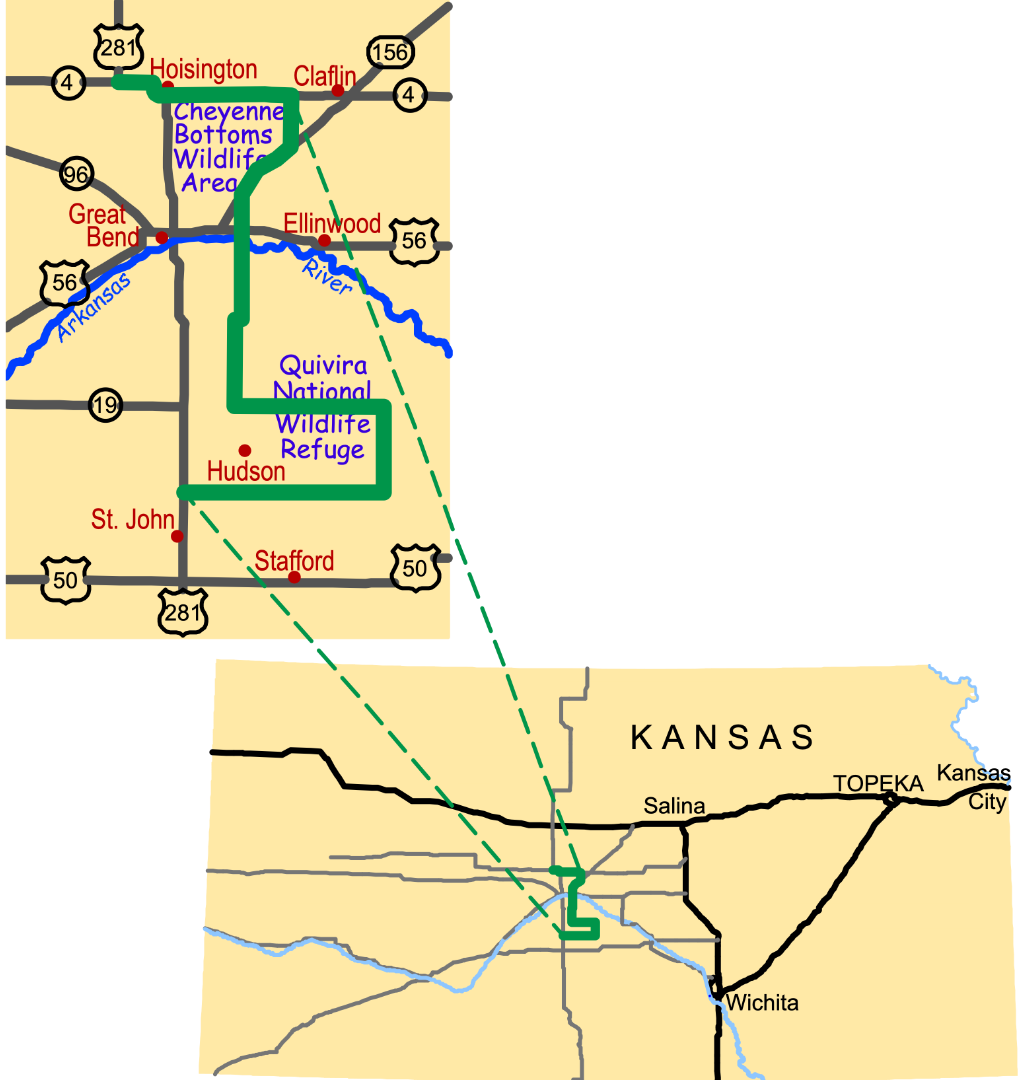Working...

Home on the Range
Bison, Prairie Dogs, and More
"The area from Great Bend westward for a hundred miles or so was a famous hunting ground for all the plains tribes, as its excellent pasturage made it the home of vast herds of buffaloes, besides plenty of antelopes and deer"
-N. H. Darton, et al., Guidebook of the Western U.S., 1915
Hollywood's Dances with Wolves ensured that the Great Plains would be forever linked with bison in American consciousness. A few centuries ago, some 60 million American bison ranged from Mexico into Canada. They were the most abundant grazing mammals in North America. Unsustainable hunting in the 1800s wiped out these immense herds. By 1900, roughly 1,000 wild bison remained in this country. Today, thanks to the work of conservationists, ranchers, and wildlife managers, bison populations have rebounded.
Although bison no longer roam freely along the Byway, you can see signs of their historic presence. Bison roll on the ground to shed hair and insect pests, and in the past, their wallows formed depressions as wide as 30 feet. Stop by The Nature Conservancy's Cheyenne Bottoms Preserve to see some of these historic wallows. Watch, too, for signs of other mammals, including prairie dogs, deer, beaver, muskrat, jackrabbits, and mink.
The Black-tailed Prairie Dog
Along the Byway, look for short-cropped grassy fields with scattered dirt mounds. These are signs of black-tailed prairie dog "towns." At The Nature Conservancy's Cheyenne Bottoms Preserve, burrowing owls* nest in prairie dog holes, just one of many species to utilize the extensive tunnels.
Motion and Change
American bison migrated through this part of Kansas by the millions. In 1871, one herd reported from southwest of Dodge City included some four million animals. Plains tribes depended on bison for food, clothing, tipis, and more, and organized their societies around bison movements.
Download the interpretive panel: Home on the Range Panel located at the Stafford County Historical Society in Stafford.
To listen to more information click on the Audio Tour
Go to the Gallery to view photographs contributed by visitors to the Byway.
* Burrowing Owls
As its name suggests, the Burrowing Owl nests underground. While it can dig its own burrow if necessary, it often uses one already made by prairie dogs, skunks, armadillos, or tortoises. The Burrowing Owl collects mammal dung and puts it in and around its burrow. The dung attracts dung beetles, which the owl then captures and eats. Burrowing owls also dine on other insects, lizards, and small rodents.
More Birds and Wildlife pages...
Birds of the Woods and Prairie
Birds of the Wetlands and Water
Wings Over the Water
Jackrabbit Run
Magic Muck
Prey and Play



